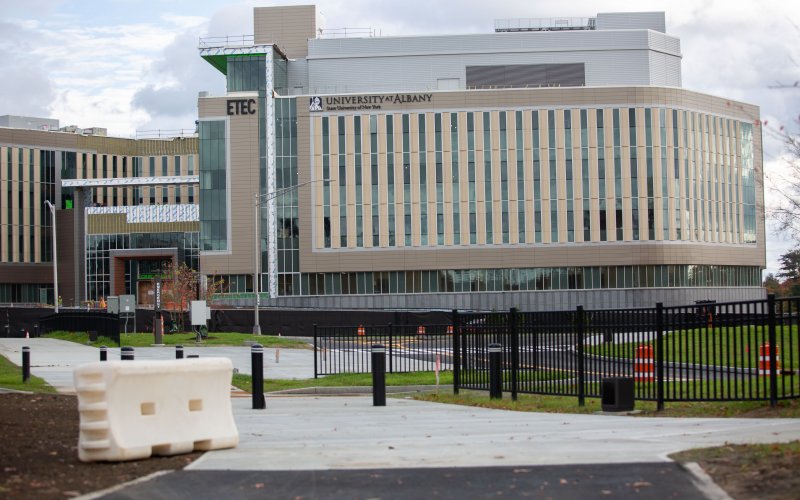Construction of the new (University at Albany) UAlbany ETEC building (Emerging Technology and Entrepreneurship Complex) is approaching its final stages of completion, after undergoing three years of construction. Ribbon cutting of the UAlbany ETEC building is expected to take place later this year and some of its operations will commence this fall.
Located just east of UAlbany’s main campus on the Harriman State Office Campus, the 246,000-square-foot UAlbany ETEC building was built for research purposes and is meant to be the base for the NYS Mesonet, which is a system of 126 towers around the state, set up with aim of gathering various data sets that can be used for research and innovation. It will also function as the main centre for hosting a fast-growing College of Emergency Preparedness, Homeland Security and Cybersecurity. Over 120 researchers will be based in the ETEC building and several faculty members are already starting to move into the complex.
Also Read New 100 MW solar farm to be constructed in Greene County, Albany
The $180 million UAlbany ETEC building consists of a 200-seat training and conference space with catering services, over 200 offices, more than 40 research labs, over 20 classrooms and labs, a cafe and multiple study rooms and spaces throughout. In addition, it will also house the Department of Atmospheric and Environmental Sciences and the Atmospheric Sciences Research Center.
Albany’s Innovation Center will be located on the first floor of the UAlbany ETEC building, and it will occupy 2,600-square-ft for the startup development and coworking space. The first floor also includes offices for the Small Business Development Center, and there is also a 2,400-square-foot space adjacent to the Albany Innovation Center that is planned for lease arrangements with companies seeking partnership opportunities.
The ETEC building’s top floor has an enclosed weather observation deck, which is meant to be used by researchers who intend to observe and study storms as they roll in. A field of 190 geothermal wells have been placed underneath the parking lot as well, to provide heating and cooling through heat pumps rather than through burning of fossil fuels.
According to the University, the nearby solar panels will fully offset electricity use by the non-lab portions of the UAlbany ETEC building and these measures are expected to reduce energy costs by about 70% each year, saving roughly $200,000 annually.
Underneath the parking lot is a field of 190 geothermal wells, providing heating and cooling through heat pumps rather than the burning of fossil fuels. UAlbany says nearby solar panels will fully offset electricity use by the non-lab portions of the building. Combined, these measures are expected to reduce energy costs by about 70% each year, saving roughly $200,000 annually.

Leave a Reply